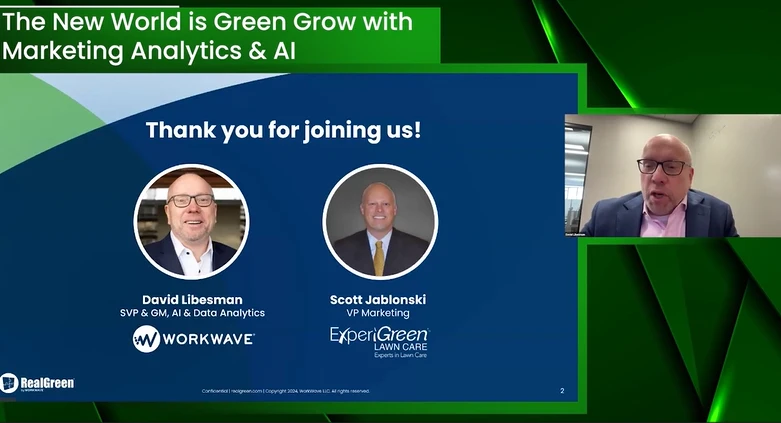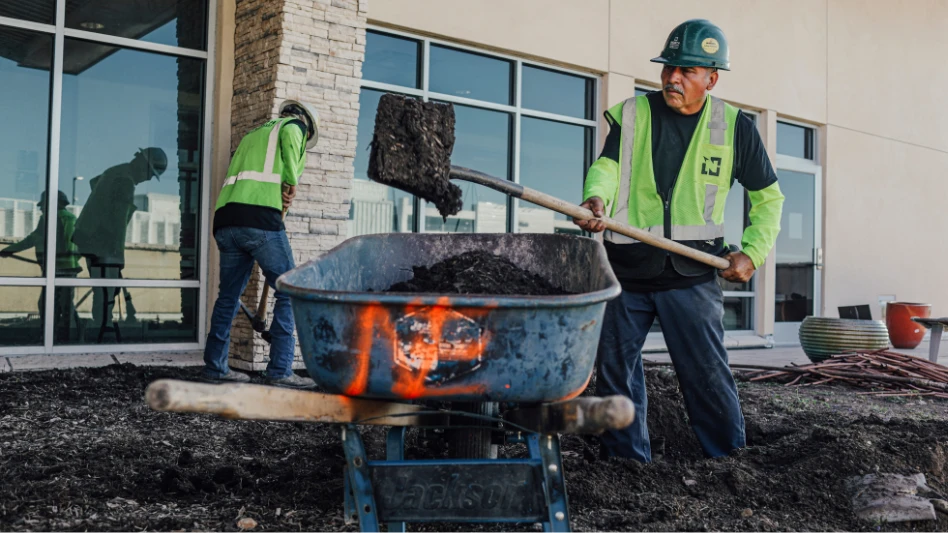

I worked with my brother-in-law, who had a small landscape company, summers and after school and holidays. I’m a little bit of a workaholic so I just enjoy being out, cutting grass and mulching. I went to Virginia Tech where I got a degree in landscape architecture.
It’s not just reckless spending. Everyone got a little wiser, both from the consumer and the landscape business side of things. You can’t get away with the stupid stuff you used to be able to get away with. It’s been good for us because a lot of the fly-by-night guys are kind of tossed to the wayside.
 Our offices are not far from downtown, about 9 miles outside of the city limits. Ninety-five percent of our business is a high net worth individual: CEOs of companies, attorneys, modern business leaders. That other 5 percent would be institutional work. We do work with the Smithsonian, the National Mall, the museums. We do work at the National Zoo.
Our offices are not far from downtown, about 9 miles outside of the city limits. Ninety-five percent of our business is a high net worth individual: CEOs of companies, attorneys, modern business leaders. That other 5 percent would be institutional work. We do work with the Smithsonian, the National Mall, the museums. We do work at the National Zoo.
I’ve been in the lion and tiger exhibit, an arm’s reach away from a lion. Yeah, it is pretty neat. We get to see some pretty cool stuff kind of behind the scenes, which is fun.
Residential doesn’t seem to bring in too many big players, which is really kind of surprising to me. It’s a tough business. It’s very customer centric; it’s very service-oriented, but the margins are so much better than commercial.
And it’s such a relationship-driven business, not price-driven, so you can really build a strong relationship with somebody. And if price does become an issue you can have a conversation about it, not necessarily just lose the job because you’re not the lowest bid.
I try to spend 70 percent of my time working on bigger picture stuff that’s not necessarily tied to day-to-day operations, and more strategic, more growth-oriented.
One of our biggest threats all the time is finding great people and then retaining great people.
I spend a lot of time recruiting to ensure that we have a pipeline of folks. In this market, we could easily outsell our ability to produce work just because we can’t find enough good, qualified people.
Our number one driver of new employees is referrals. And so really having a good, healthy work environment where people are excited to be a part of the company helps. We have a referral program where they get paid basically a bonus – a referral bonus based on the level of employee that you bring in. That’s really where we have the most success.
We do a lot of college recruiting. There’s nothing better than a good internship program where you’re getting students through the door, having a good experience, and they go back and sell your company for you.
Focus on building a great culture, and then ensuring that people that you have are great fits to that culture that you want. When you don’t have the right people that fit your culture, you’re going to stagnate. But if you can get those aligned: great fit, great culture with great people, growth is explosive.
Everybody on the top management team needs to be constantly improving personally. When I started here we were a $4 million company and now we’re a $17 million company. Our goal is in two years to be over $20 million. And to lead that I’ve got to make sure that I’m really pushing myself – from reading books to attending seminars to building kind of a support network of good people.

Explore the February 2015 Issue
Check out more from this issue and find your next story to read.
Latest from Lawn & Landscape
- Ever-changing landscape of SEO
- Fleetio acquires Auto Integrate, raises $450M in Series D funding
- Davey Tree expands in St. Paul, promotes Ostlie to district manager
- Schill Grounds Management taps 3 for senior leadership roles
- HD Hyundai Construction Equipment North America adds to wheeled excavator lineup
- High maintenance
- From Design to Proposal: Estimating and Rendering Support Services
- PERC adds Joel Stutheit as senior manager of business development





